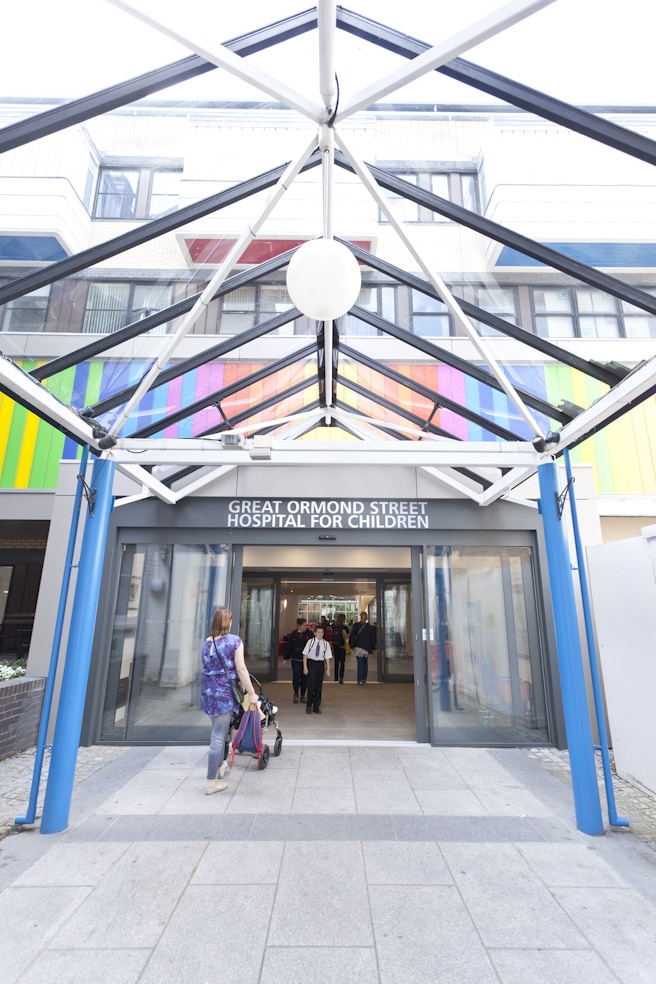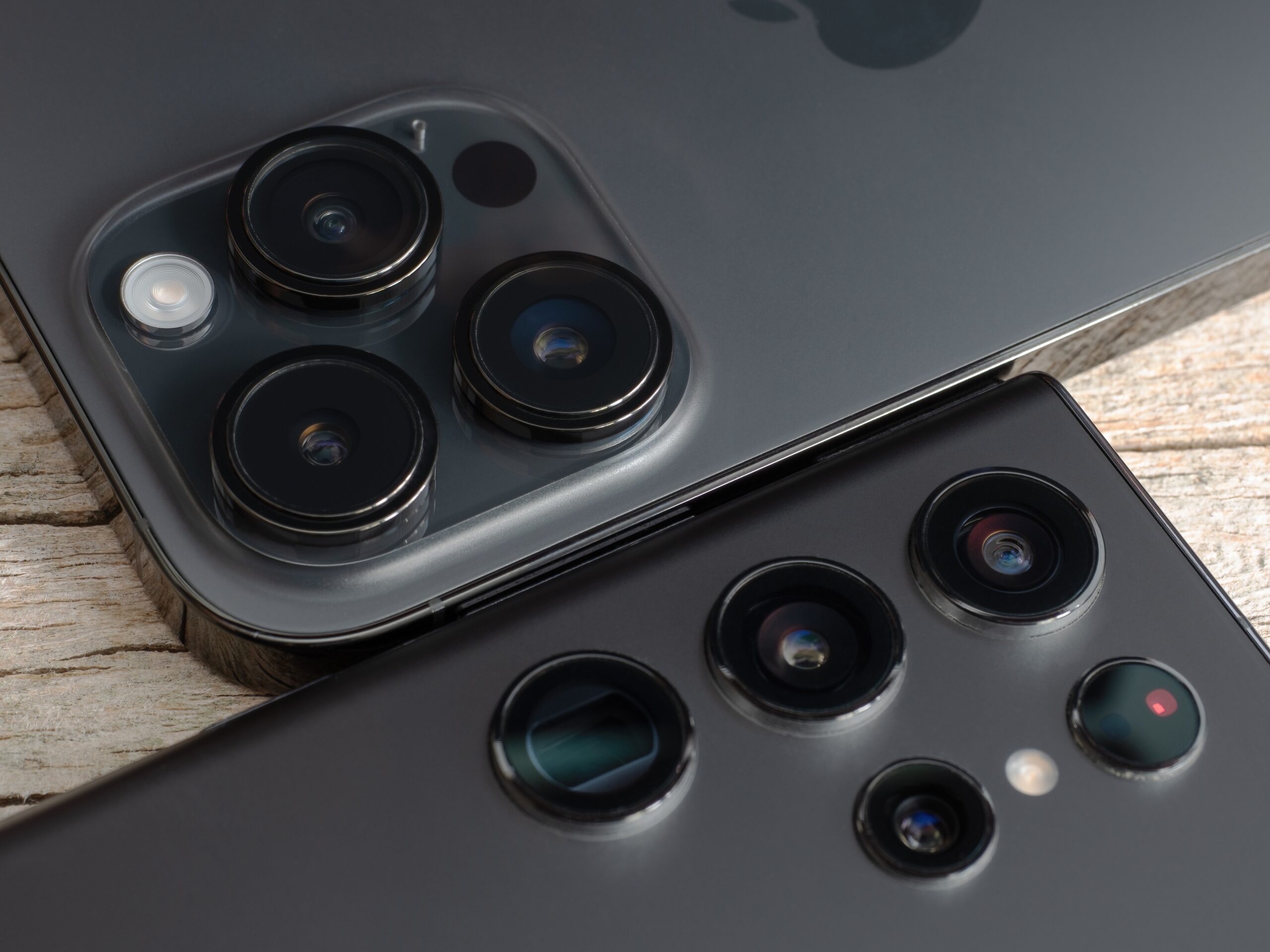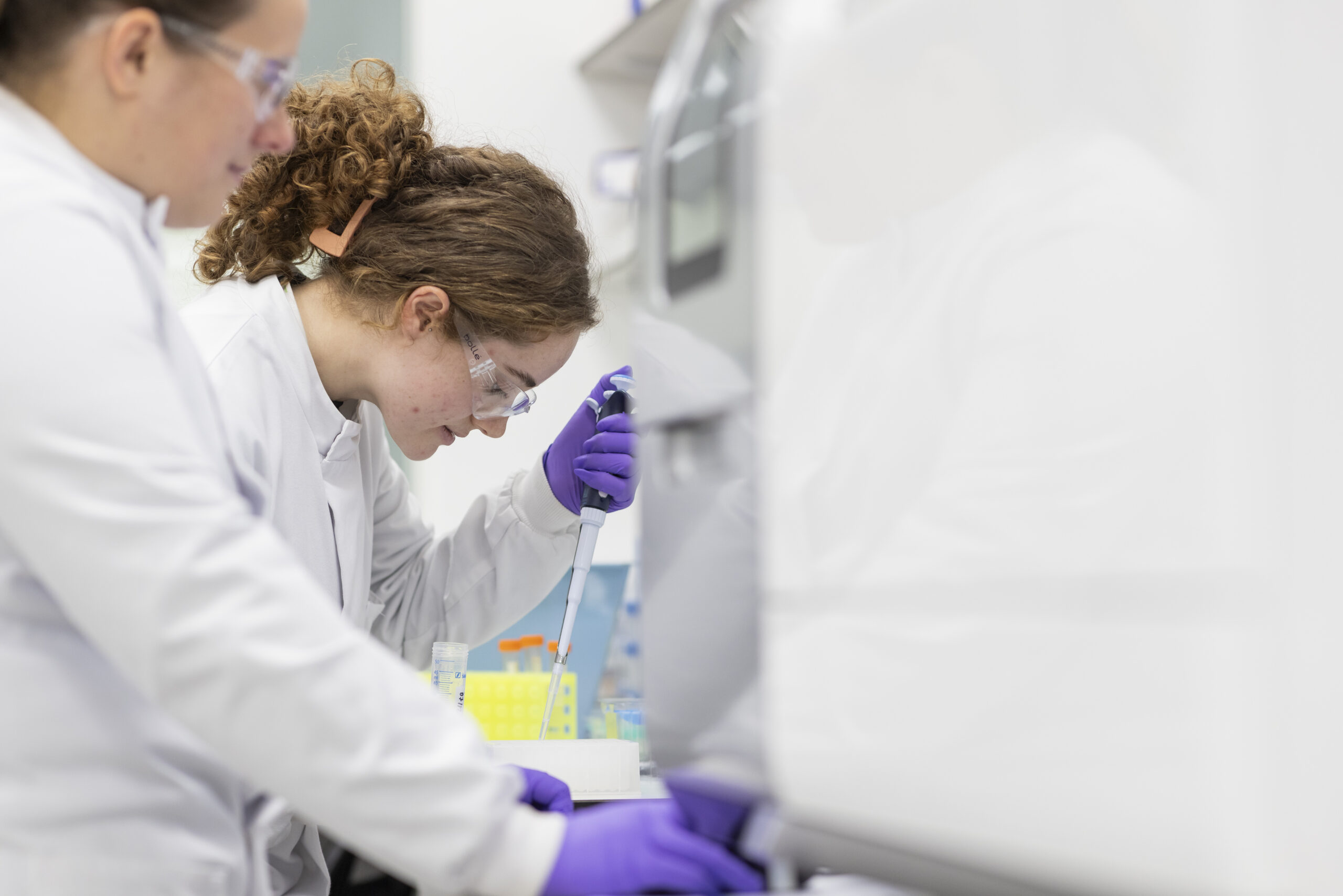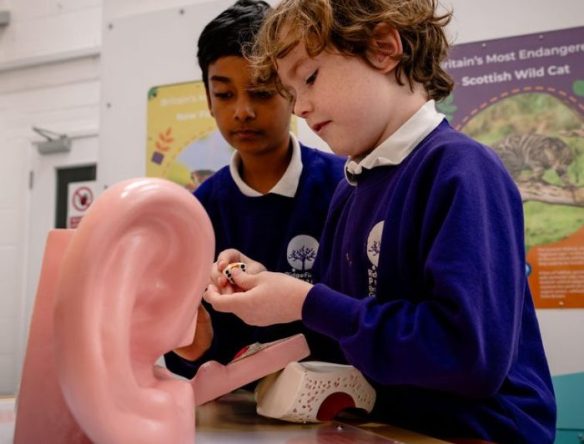LifeArc and GOSH charity fund
LifeArc and GOSH Charity support a joint funding scheme focused on helping GOSH researchers drive their discoveries towards new tests and treatments for childhood rare diseases.

Overview
Researchers based at Great Ormond Street Hospital (GOSH) and the UCL Great Ormond Street Institute of Child Health generate potentially life-changing ideas through lab-based science. The hospital also has world-leading clinical expertise and a unique patient group. Through this funding collaboration, we can deploy our additional expertise in translational research so that more discoveries are ready for the next stage, bringing treatments and cures one step closer to the children that need them.
“LifeArc’s philanthropic activity has a particular focus on rare diseases. GOSH, with its unique patient population, wealth of expertise and aligned goals, is our ideal partner for this project.”
Dr Catriona Crombie, Head of the Rare Disease Translational Challenge and Philanthropic Fund Manager
Application eligibility
The scheme provides funding for translational, milestone-driven projects led by research-active professionals based at GOSH or the UCL Great Ormond Street Institute of Child Health. Qualifying projects should already be on the translational pathway and focused on improving the prevention, diagnosis, prognosis or treatment of rare disease. Projects aimed at developing research tools to improve the efficiency of creating interventions in rare disease are also eligible.
We expect that researchers will continue to develop their intervention by securing further funding from external translational schemes or partnering with industry. We encourage collaborations with industry and other academic partners where these are relevant to the project. Lead applicants may only submit one application per round.
Application requirements
Applications in the last funding round needed to:
- address a rare disease medical need
- have a strong scientific rationale
- be a target-driven project with a credible delivery plan and clear milestones
- have a clear route to patient
- make the most of the unique patient populations at GOSH
The following activities were eligible for support:
- developing candidate therapeutic entities (e.g. drug discovery)
- pre-clinical testing of novel therapeutic entities in vitro or in vivo
- pre-clinical validation for repurposed therapeutics
- early-phase clinical trials of novel therapeutic entities (phases 1/2)
- clinical trials of existing therapeutics repurposed for a new indication
- developing and testing novel devices
- developing and testing diagnostics (including biomarker validation)
All modalities of intervention were eligible for support from the scheme, including small molecules, peptides, antibodies, vaccines, regenerative medicine, cell and gene therapy, devices, surgical techniques and psychological approaches.
If you have any questions about the programme, please contact grants@gosh.org.
Projects funded in 2022
Denys-Drash syndrome (DDS)
Title: Nanocomplex therapy for childhood kidney disease
Principal investigator: Professor David Long, Kidney Development & Disease research group at Great Ormond Street Institute of Child Health (ICH)
Amount funded: £193,851
This project aims to develop a new treatment for children with a rare genetic kidney syndrome called Denys-Drash syndrome (DDS) – improving the outlook for affected children and their families.
Children born with DDS will develop kidney disease in the first few months of life. This damage will usually rapidly worsen, leading to complete kidney failure in early childhood. Children living with DDS will then need life long dialysis while they wait for a transplant.
DDS is caused by damage to kidney cells responsible for filtering waste from the blood. Unfortunately, there are currently no effective treatments that can help slow down or stop this damage.
The researchers have designed a new treatment for DDS, which aims to boost the activity of a protein called angiopoietin-1 and help protect the kidneys from damage. By packaging the new therapy into tiny balls of fat, they hope to reduce the chance of the kidneys removing it from the body – and they have also attached a small protein fragment to target it specifically to the affected kidney cells.
The team will now test their new treatment in a laboratory model of DDS – delivering it using a unique technique involving ultrasound scanning to guide an injection directly into the kidney’s blood supply. Their results will establish the effectiveness of this novel delivery method and determine if their treatment can help slow or stop kidney damage in this disease model.
Cone-rod dystrophies (CORDs) and cone dystrophies (CODs)
Title: Engineering a cone-rich retinal cell patch to treat COD/CORD
Principal investigator: Professor Jane Sowden, Professor of Developmental Biology and Genetics at the Great Ormond Street Hospital for Children NHS
Amount funded: £360,160
Cone-rod dystrophies (CORDs) and cone dystrophies (CODs) are a group of inherited eye diseases affecting the light-sensing cells (rods and cones) in the retina at the back of the eye. These photoreceptor cells detect the light coming into the eye, producing information that is then sent to the brain via other nerve cells.
In children with CORD/COD, the rods and cones eventually die, causing sight loss that worsens over time. Sight is most severely affected when cone cells are lost in the central region of the retina as they provide clarity of vision, daylight and colour vision.
Stem cells are a special type of cell that can develop into many other types of cells in the body, including rods and cones – offering a potential way to repair damage to the retina in children with CORD/COD.
The team has already grown 3D ‘mini-retinas’ from human stem cells in laboratory dishes, which they have engineered so it is possible to purify rod and cone cells. They now need to establish how best to deliver the new cells to the retina so that they can detect light and send visual information to the brain.
In this project, the researchers will grow purified cone cells on a tiny scaffold – creating a patch of cells that can then be surgically positioned into the central region of the retina. They will then carry out experiments to find out if the transplanted cone cells can successfully make connections with nerve cells in the retina – laying the foundations for a future clinical trial of this novel technology.
Lennox-Gastaut syndrome (LGS)
Title: The CADET Trial (Children’s Adaptive Deep brain stimulation for Epilepsy Trial)
Principal investigator: Mr Martin Tisdall, consultant paediatric neurosurgeon at Great Ormond Street Hospital (GOSH)
Amount funded: £414,694
Lennox-Gastaut syndrome (LGS) is a rare yet severe type of epilepsy. Affected children will experience many different types of seizures that begin early in childhood, usually between three to five years of age. The condition is very difficult to treat as it is often resistant to anti-seizure medications – and the frequent seizures can affect a child’s quality of life and brain development.
Deep brain stimulation (DBS) therapy is a potential new treatment for epilepsy that involves implanting electrodes into specific parts of the brain and then stimulating these areas with small electrical impulses. This approach has shown promise in adults with epilepsy, but there is currently a lack of knowledge about its safety and effectiveness in children.
The CADET Trial (Children’s Adaptive Deep brain stimulation for Epilepsy Trial) aims to accelerate the translation of DBS for children with epilepsy. The study will recruit 22 children with drug-resistant LGS between five and fifteen years of age. All participants will have surgery to implant a state-of-the-art new DBS device specially designed for children. They will then be randomly split into two groups – either receiving electrical stimulation (‘on’) or no stimulation (‘off’) for three months, followed by a further six months of active stimulation.
The team will compare the number of seizures recorded prior to surgery with those at the end of 6 months of treatment to determine if DBS therapy can help to reduce the frequency of seizures. They will also look at the safety of the procedure – and the effects of the treatment on the severity of seizures, quality of life, and learning abilities.
Maple Syrup Urine Disease (MSUD)
Title: Preclinical validation of liver gene therapy for Maple Syrup Urine Disease
Principal investigator: Professor John Counsell, UCL Great Ormond Street Institute of Child Health
Amount funded: £342,385
This research aims to develop a new gene therapy for children with a severe metabolic illness called Maple Syrup Urine Disease (MSUD).
A child born with MSUD can’t process certain amino acids (the building blocks of proteins), leading to a harmful build-up of substances in the body. Without treatment, a child can develop severe, life-threatening symptoms – including seizures and coma. Some children will also be at risk of brain damage and may have delays in reaching their developmental milestones.
In the UK, newborn babies are usually screened for MSUD. Once diagnosed, they are started on a special low-protein diet. But many children will continue to experience episodes of amino acid imbalance, which can lead to irreversible brain damage.
MSUD is caused by faults in one of three genes that together contain the instructions to build an enzyme that breaks down certain amino acids. The researchers are hoping to use a virus to permanently introduce a healthy copy of the affected gene into patient liver cells shortly after birth. This approach offers the potential to provide lifelong protection from MSUD by restoring normal amino acid breakdown in treated liver cells.
The team will now test the safety and effectiveness of their new gene therapy in a laboratory model of MSUD, laying the foundations for a future clinical trial. If successful, the approach could be used to treat many other metabolic diseases that are rooted in the liver.
Projects funded in 2021
Paediatric high-grade gliomas
Title: IL13RA2-targeted T-cell therapy for paediatric high-grade gliomas
Principal investigator: Dr Karin Straathof, Child Health Excellence Fellow, Developmental Biology & Cancer Dept, UCL GOS Institute of Child Health and honorary consultant oncology, Great Ormond Street Hospital
Co-investigators: Dr Thomas Jacques, Prof Juan Pedro Martinez-Barbera, Dr Martin Pule, Dr Claire Roddie and Prof Darren Hargrave
Location: UCL GOS Institute of Child Health
Amount funded: £273,702
High-grade gliomas (HGG), referred to as Diffuse Midline Gliomas (DMG), are childhood central nervous system tumours that are very difficult to treat. DMG is the second most common type of primary, high grade brain tumour in children and, sadly, fewer than 10% of children live more than two years after diagnosis.
With this project, Dr Karin Straathof’s team is developing a type of immunotherapy for DMG using immune cells called T cells. T-cells play a vital role in our immune system, recognising and eliminating cells infected with, for example, a virus. However, unlike infected cells, cancer cells often go unnoticed by T cells as they appear similar to the healthy cells from which the cancer has developed. To get around this, and use the power of T cells as cancer therapy, T cells can be engineered to recognise cancer cells using an artificial receptor called a chimeric antigen receptor, or CAR for short.
Early results with CAR T-cell therapy for adults with high-grade gliomas show that these engineered T-cells can attack the tumour. However, the responses are variable and relatively short-lived. This is probably because tumours such as DMG create an environment in which the CAR-T cells can only work for a short period of time. Therefore, in this project, patient T cells will not only be engineered with a CAR which enables the T cells to recognise the tumour, but also with other modules which provide the T cells with extra ‘powers’ to continue to work despite barriers put up by the tumour to avoid CAR-T cell attack.
The team aims to develop a CAR T-cell that responds specifically to a membrane protein, IL-13RA2, which most paediatric HGGs express.
In addition, the team aims to:
- engineer the CAR T-cells with functional modules to overcome challenges at the tumour site
- test different modules using relevant pre-clinical models
- select the most promising approach to translate into a clinical study.
Primary immunodeficiencies
Title: Pre-clinical studies for a stem cell gene editing platform to treat primary immunodeficiencies.
Principal investigator: Dr Alessia Cavazza, Non-Clinical Lecturer, Infection, Immunity & Inflammation Dept., UCL GOS Institute of Child Health
Location: UCL Great Ormond Street Institute of Child Health, Molecular and Cellular Immunology
Amount: £249,734
Children born with severe Wiskott-Aldrich syndrome (WAS) experience wide-ranging symptoms and are at risk of early death without proper treatment. Symptoms of this immunodeficiency disease include easy bruising, bloody diarrhoea and prolonged bleeding following nose bleeds or minor trauma. They are more vulnerable to infection and at higher risk of developing certain cancers.
WAS is caused by errors written into a section of DNA, the X-chromosome. WAS affects almost exclusively boys – around three in every million worldwide – because females have two copies of the X-chromosome and males just one. This gives females an insurance against the errors in one X-chromosome that cause WAS.
As there is no effective treatment, many people born with WAS die before they are 20. The current standard treatment is a bone marrow transplant, but only around 20% of patients can find a suitable matching donor.
Last year Dr Alessia Cavazza’s team published encouraging results for an adapted gene therapy.
Using CRISPR-Cas9 technology – sometimes called ‘molecular scissors’ – they made a physical cut through DNA at the precise place where the WAS gene is usually found. This guided the gene delivery system to slot the corrected gene into the part of the sequence where it is found in a healthy person.
This precise placement of the WAS gene corrected around 60% of cells, while leaving them otherwise unaffected. These cells continued their normal life cycle of maturing into different types of immune system cells.
The team aims in this project to confirm the safety of this particular gene editing technique. If they do, they could start clinical trials at Great Ormond Street Hospital in 2-3 years. The hospital sees around 20-25 patients with WAS each year.
Pantothenate kinase-associated neurodegeneration (PKAN)
Title: A Phase II Study of a Novel Vitamin Metabolite (CoA-Z) for Pantothenate Kinase Associated Neurodegeneration (PKAN)
Principal investigator: Prof Manju Kurian, Professor of Neurogenetics, Developmental Neurosciences Dept, UCL GOS Institute of Child Health
Co-investigators: Dr Penelope Hogarth and Prof Susan Hayflick (The Spoonbill Foundation)
Location: Great Ormond Street Hospital, Neurosciences Unit at the Institute of Child Health, UCL
Amount funded: £414,842
People with pantothenate kinase-associated neurodegeneration (PKAN) experience a progressive degeneration of the nervous system (a neurodegenerative disorder). MRI scanning has also revealed a build-up of iron in the brain.
Following normal early neurodevelopment, patients increasingly experience problems with their cognitive and physical abilities. Eventually patients are wheelchair-bound, unable to speak and fully dependent for daily living activities.
The disease is caused by a mutation in the protein coding gene PANK2, which provides instructions for making an enzyme called pantothenate kinase 2. This enzyme is active in specialised cellular structures called mitochondria, which are the cell’s energy-producing centres. MRI scans show a build-up of iron in parts of the brain.
There are currently no treatments that significantly modify the condition.
The funding will support UK participation in a Phase 2 safety and tolerability trial of a drug developed by collaborators in the United States that has produced encouraging results in mice. The team’s US partners will conduct a trial with 48 patients. Given the disease rarity, the UK team’s simultaneous trial involving 24 patients will substantially strengthen the study conclusions.
The trial will take two years.
Contact us
In submitting your personal data via this form, you consent to being contacted via the details provided so that your enquiry can be responded to. If you would like your data to be removed, please email dataprivacy@lifearc.org.
Please see our Privacy Policy in relation to the personal data you submit to us through this page.
Latest news
-

New smartphone app offers hope in the fight against neglected tropical diseases
Read more: New smartphone app offers hope in the fight against neglected tropical diseases -

Bronchiectasis: an overlooked lung condition with untapped commercial and research potential
Read more: Bronchiectasis: an overlooked lung condition with untapped commercial and research potential -

Cambridge Science Centre opens new facility that will educate and inspire the next generation of scientists
Read more: Cambridge Science Centre opens new facility that will educate and inspire the next generation of scientists
